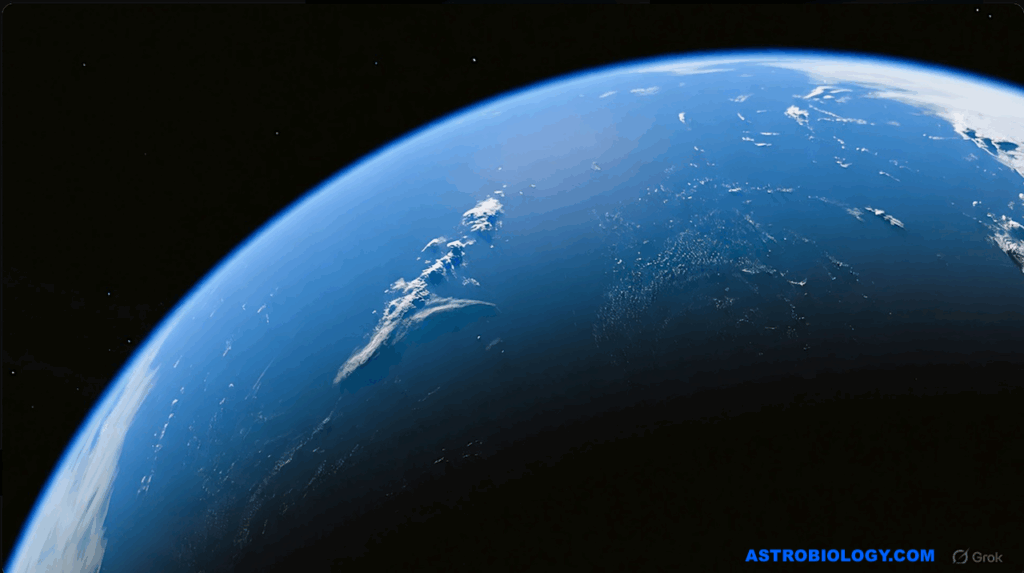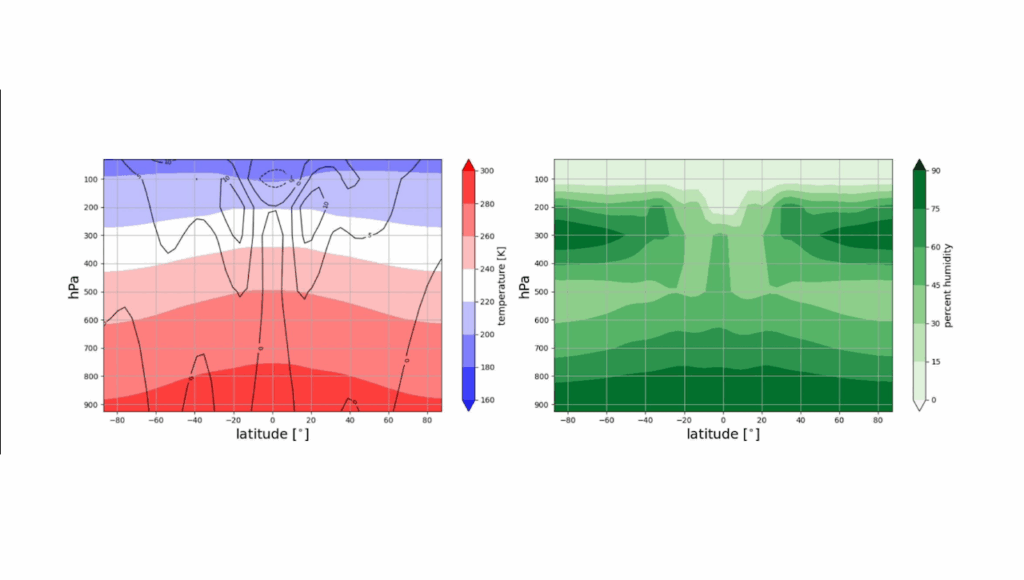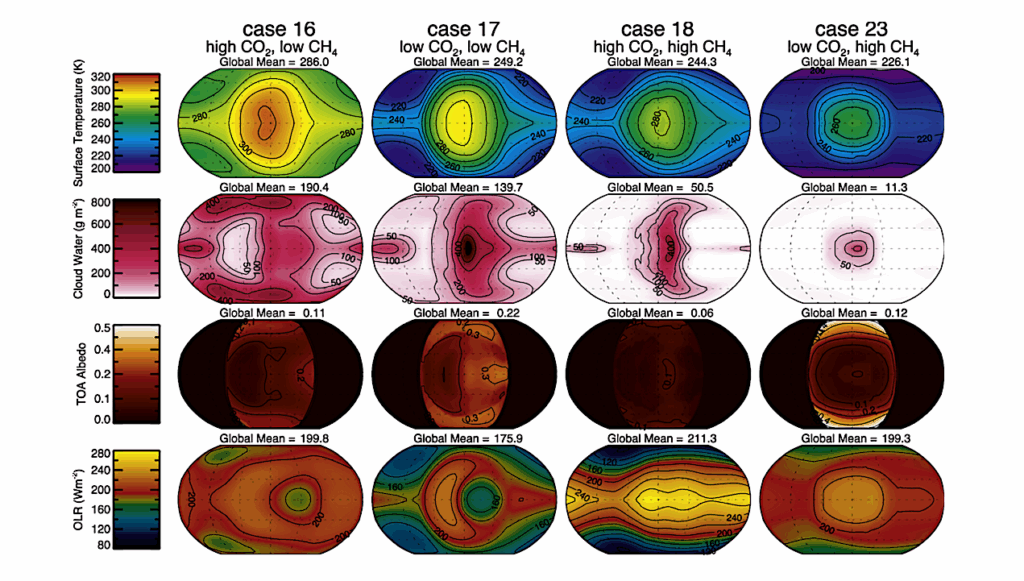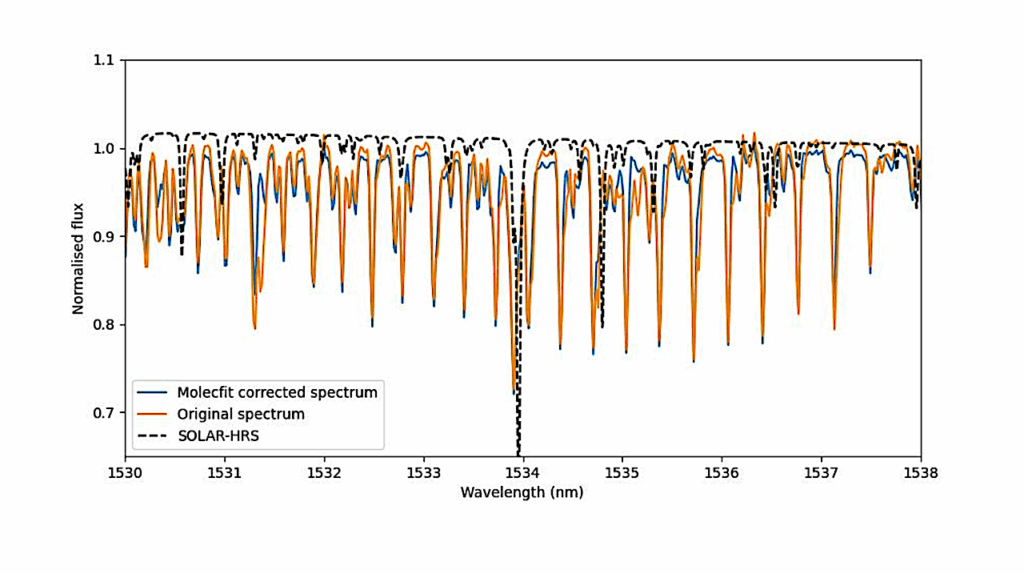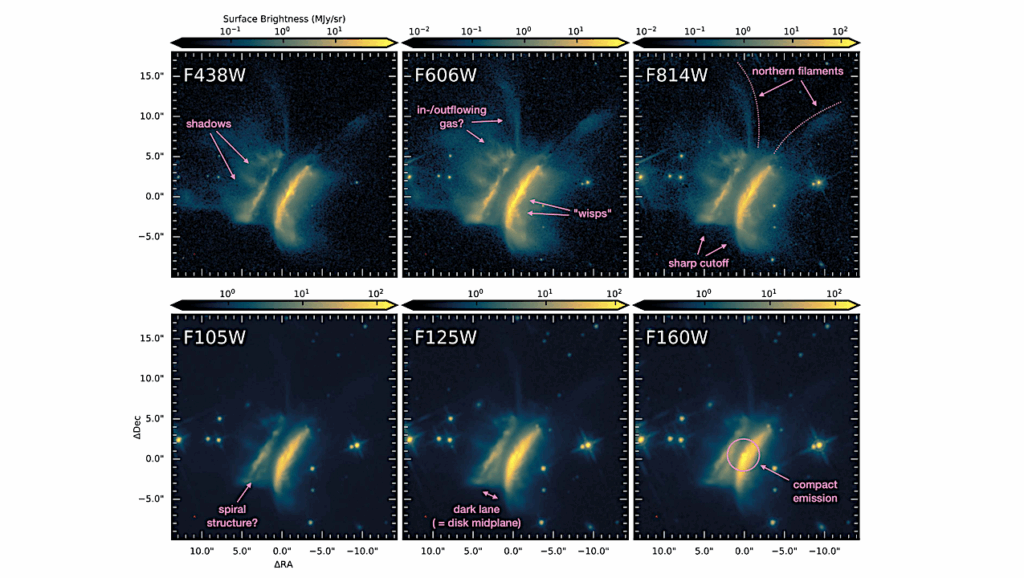Diagnostic Potential Of A Mid-infrared Space-interferometer For Studying Earth Analogs
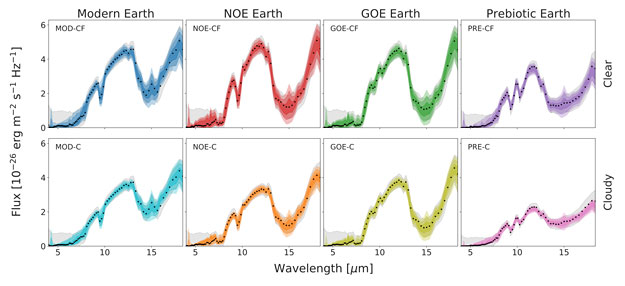
An important future goal in exoplanetology is to detect and characterize potentially habitable planets. Using nulling interferometry, LIFE will allow us to constrain the radius and effective temperature of (terrestrial) exoplanets, as well as provide unique information about their atmospheric structure and composition.
We explore the potential of LIFE in characterizing emission spectra of Earth at various stages of its evolution. We perform Bayesian retrievals on simulated spectra of 8 different scenarios, which correspond to cloud-free and cloudy spectra of four different epochs of the evolution of the Earth. Assuming a distance of 10 pc and a Sun-like host star, we simulate observations obtained with LIFE using its simulator LIFEsim, considering all major astrophysical noise sources. With the nominal spectral resolution (R=50) and signal-to-noise ratio (assumed to be S/N=10 at 11.2 μm), we can identify the main spectral features of all the analyzed scenarios (most notably CO2, H2O, O3, CH4). This allows us to distinguish between inhabited and lifeless scenarios.
Results suggest that particularly O3 and CH4 yield an improved abundance estimate by doubling the S/N from 10 to 20. We conclude that the baseline requirements for R and S/N are sufficient for LIFE to detect O3 and CH4 in the atmosphere of an Earth-like planet with an abundance of O2 of around 2% in volume mixing ratio. This information is relevant in terms of the LIFE mission planning. We also conclude that cloud-free retrievals of cloudy planets can be used to characterize the atmospheric composition of terrestrial habitable planets, but not the thermal structure of the atmosphere. From the inter-model comparison performed, we deduce that differences in the opacity tables (caused by e.g. a different line wing treatment) may be an important source of systematic errors.
Large Interferometer For Exoplanets (LIFE): V. Diagnostic Potential Of A Mid-infrared Space-interferometer For Studying Earth Analogs
Eleonora Alei (1 and 2), Björn S. Konrad (1 and 2), Daniel Angerhausen (1 and 2 and 3), John Lee Grenfell (4), Paul Mollière (5), Sascha P. Quanz (1 and 2), Sarah Rugheimer (6), Fabian Wunderlich (4), the LIFE collaboration ((1) ETH Zurich, Institute for Particle Physics & Astrophysics, Zurich, Switzerland, (2) National Center of Competence in Research PlanetS, (3) Blue Marble Space Institute of Science, Seattle, United States, (4) Department of Extrasolar Planets and Atmospheres (EPA), Institute for Planetary Research (PF), German Aerospace Centre (DLR), Berlin, Germany, (5) Max-Planck-Institut für Astronomie, Heidelberg, Germany (6) Department of Physics, University of Oxford, Oxford, UK)
Comments: 18 pages (main text, incl. 11 figures) + appendix; submitted to A&A; comments are very welcome! Fifth paper of LIFE telescope series. First: arXiv:2101.07500v4, Second: arXiv:2203.00471, Third: arXiv:2112.02054, Sixth: arXiv:2201.04891
Subjects: Earth and Planetary Astrophysics (astro-ph.EP); Instrumentation and Methods for Astrophysics (astro-ph.IM)
Cite as: arXiv:2204.10041 [astro-ph.EP] (or arXiv:2204.10041v1 [astro-ph.EP] for this version)
Submission history
From: Eleonora Alei
[v1] Thu, 21 Apr 2022 11:56:37 UTC (1,848 KB)
https://arxiv.org/abs/2204.10041
Astrobiology,


